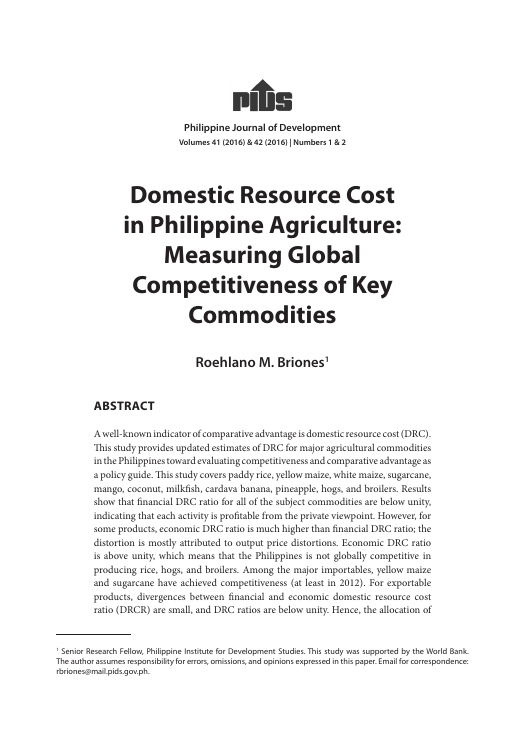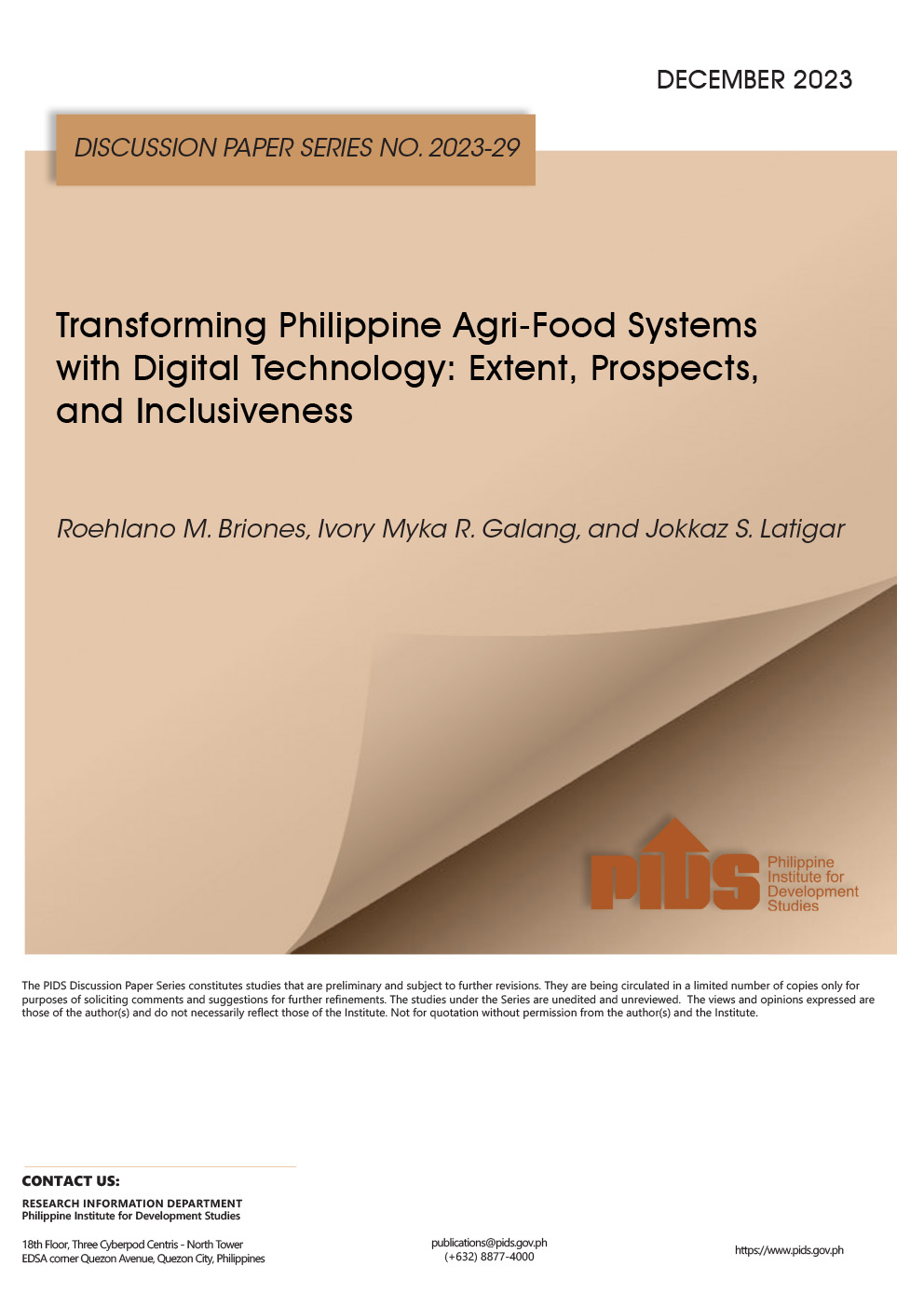A well-known indicator of comparative advantage is domestic resource cost (DRC). This study provides updated estimates of DRC for major agricultural commodities in the Philippines toward evaluating competitiveness and comparative advantage as a policy guide. This study covers paddy rice, yellow maize, white maize, sugarcane, mango, coconut, milkfish, cardava banana, pineapple, hogs, and broilers. Results show that financial DRC ratio for all of the subject commodities are below unity, indicating that each activity is profitable from the private viewpoint. However, for some products, economic DRC ratio is much higher than financial DRC ratio; the distortion is mostly attributed to output price distortions. Economic DRC ratio is above unity, which means that the Philippines is not globally competitive in producing rice, hogs, and broilers.
Sensitivity analysis is conducted for the main import-competing products, namely, rice, yellow maize, sugarcane, broilers, and hog; the sensitivity results confirm the robustness of the findings. The competitiveness analysis places the current policy framework into question. Comparative costs of rice, broilers, and hogs are currently at high levels. It is unrealistic to expect market and technology conditions to change drastically enough to make these products competitive (except perhaps for hogs). Given the large penalty of protection to consumers, and the fiscal burden of production support, it is appropriate to scale back on self-sufficiency targets for these uncompetitive products.
For yellow maize and sugarcane, market conditions and technology have evolved to the point where these sectors are now globally competitive. Again, liberalization is highly appropriate, especially on the export side. There should also be greater emphasis on processing and logistics in order for the supply chain to maximize benefit from the farmers’ comparative advantage. Public goods for competitive crops, such as public research and development centers (which are historically underfunded or missing altogether), extension systems, and infrastructure, remain promising opportunities for government investment.













